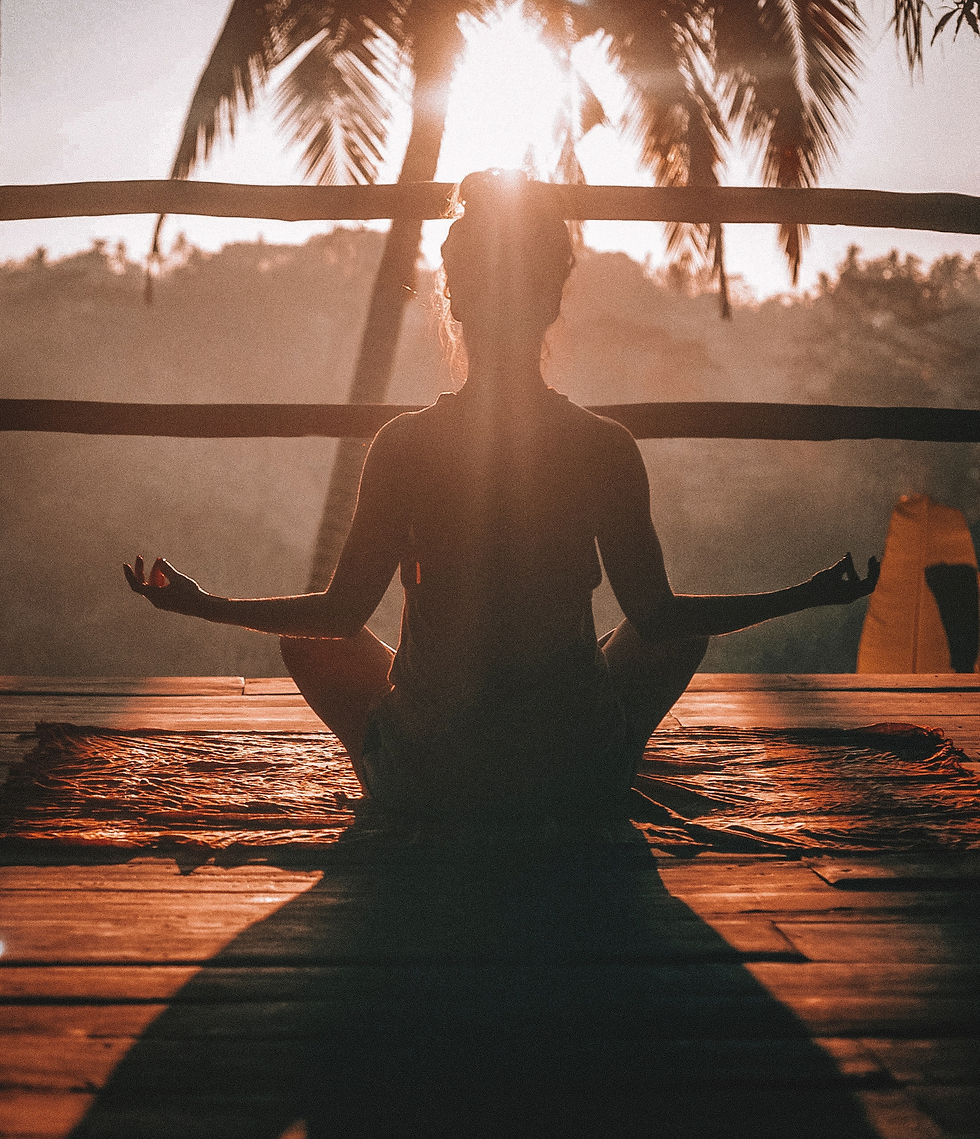Embarking on the Path of Meditation: A Beginner's Guide
- C Lin

- May 20, 2023
- 3 min read
In a world filled with constant noise and distractions, finding moments of inner stillness and peace has become essential. Meditation offers a powerful tool for reconnecting with ourselves, cultivating mindfulness, and enhancing overall well-being. If you're new to meditation and eager to start your own practice, this beginner's guide will provide you with valuable insights and practical steps to embark on this transformative journey.
Create a Sacred Space: Choose a quiet and comfortable space in your home where you can meditate without interruptions. Clear the area of clutter and make it visually appealing by adding elements that inspire tranquility, such as candles, plants, or soft lighting. This dedicated space will serve as your sanctuary for meditation, a place where you can disconnect from the outside world and connect with your inner self.
Set Realistic Expectations: Approach meditation with an open mind and without judgment. Understand that meditation is a skill that develops over time, so be patient and gentle with yourself. Release any preconceived notions or expectations about the outcomes of your practice. Remember, the true essence of meditation lies in the process itself, not in achieving a specific result.
Choose a Technique: There are various meditation techniques to explore, so find one that resonates with you. Some popular options include:
Mindfulness Meditation: Focus your attention on the present moment, observing your thoughts and sensations without judgment.
Guided Meditation: Follow a recorded or live audio guide that leads you through visualization and relaxation exercises.
Loving-Kindness Meditation: Cultivate feelings of love, compassion, and well-wishing towards yourself and others.
Mantra Meditation: Repeat a word, phrase, or mantra silently or aloud to center your mind and enhance focus.
Breath Awareness Meditation: Direct your attention to the sensation of your breath, anchoring yourself in the present moment.
Experiment with different techniques to find the one that resonates with your preferences and goals.
Start with Short Sessions: Begin your meditation practice with short sessions, gradually increasing the duration as you become more comfortable. Aim for 5 to 10 minutes initially and gradually extend to 15, 20, or even 30 minutes over time. Consistency is more important than duration, so commit to a regular practice, even if it's just a few minutes each day.
Find a Comfortable Posture: Sit in a posture that is comfortable and relaxed. You can choose to sit cross-legged on a cushion or mat, or sit on a chair with your feet flat on the ground. Keep your spine upright but not rigid, allowing for natural alignment. Rest your hands comfortably on your lap or knees.
Focus on Your Breath: A fundamental aspect of meditation is focusing on your breath. Direct your attention to the sensation of your breath entering and leaving your body. Notice the rise and fall of your abdomen or the feeling of air passing through your nostrils. Whenever your mind wanders, gently bring your focus back to your breath, without judgment or frustration.
Embrace Consistency: Consistency is key to reaping the benefits of meditation. Set aside a specific time each day for your practice. Many find it helpful to meditate in the morning, as it sets a positive tone for the day ahead. However, choose a time that works best for you and commit to it. Consider using meditation apps or timers to help you stay on track.
Seek Guidance and Support: As a beginner, it can be beneficial to seek guidance and support. Explore meditation classes, workshops, or online resources that provide instruction and insights into different meditation techniques. You may also consider joining a local meditation group or seeking guidance from an experienced meditator or teacher






Comments